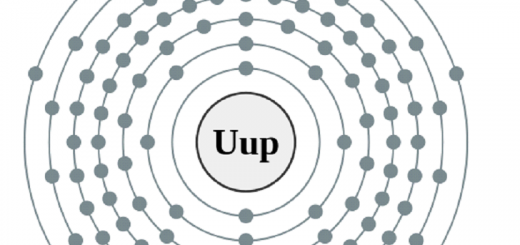TLC the Forensic Way
Thin layer chromatography, more often referred to as TLC, is something you may well have unwittingly carried out a variation of as a child with some filter paper and pens. However it also made a recent cameo in an episode of CSI: Crime Scene Investigation. So what exactly is TLC and what part does it have to play in modern forensic science?
Chromatography is method of separation using two phases; a mobile phase and a stationary phase. With TLC, the stationary phase is a thin layer (hence the name) of alumina or silica on a plate. The mobile phase depends on the nature of the sample you want to separate. Samples are spotted onto the plate towards the bottom and the plate is then stood up in a ‘tank’ (often nothing more glamorous than a glass jam jar) which has a volume of solvent (the mobile phase) in the bottom. The solvent is then allowed to travel up the plate via capillary action but must be removed before the solvent reaches the top. The point at which the solvent has reached on the plate is then marked. This is called the solvent front and is important for calculating the retardation factor or Rf value. The distance each part of the sample has travelled up the plate is also marked and this distance divided by the solvent front gives the Rf value. This can be compared with known Rf values to try and identify a compound, although a direct comparison with a standard and unknown on the same plate would produce the most accurate results.
While the very similar technique of paper chromatography is only carried out on coloured samples, the use of visualisation reagents means that a wider array of samples can be tested with TLC.
The use of TLC in forensics
TLC is used for the identification and comparison of drugs, explosives, inks and dyes. The technique is limited only by the need for samples to be soluble. This is a particular issue when investigating pen inks since the development of gel pens, the ink of which is insoluble. Therefore gel pen ink cannot be analysed via TLC. In fact gel pen inks have proved difficult to analyse via typical forensic techniques. For more information on ink analysis, in particular the development of analytical techniques for gel pens, a good place to start is this video produced by a colleague within the Centre for Forensic Science.
Testing dyes and inks
Liquid dye samples and ink within pens can be applied directly to TLC plates. When the dye is on fibres, for example from a piece of clothing, the dye must be removed from the fibre into a solvent which can then be applied to the TLC plate. This is usually carried out by sealing the fibre in a tube with a small amount of solvent then heating the tube for at least an hour. The solvent can then be spotted onto the TLC plate.
When the ink you want to test is on a piece of paper a similar method is followed except that there is no need to heat the sample and solvent. Simply cut a small section of the paper with the ink on, place it in a tube with solvent and leave it until the ink has dissolved in the solvent (there should be a colour change visible as the ink moves into the solvent). Then once again the solvent is simply spotted onto a TLC plate.
Once a TLC plate has been run there should be clear bands visible on the plate indicating the separation of different components of the ink or dye. The Rf values and the colour of the bands can be recorded and in the case of inks compared to a database held by the United States secret service. This can help identify the ink used and from this it may be possible to identify a specific pen that contains that particular ink. As ink manufacturers add different compounds to new inks these specific features can be used to date the bands seen on a TLC plate. So remarkably, a quick bit of TLC can identify an unknown pen ink (CSI actually got something right for once).
If the aim was to determine whether writing was made by a specific pen, both samples should be run on the same plate and then they can be compared directly. However, caution must be taken when making conclusions about the results. While if the two samples do not produce matching bands that means that the note was not written using that pen, if the bands do match this means that the note could have been written using that pen. Due to the number of pens produced that will contain the same ink it is not possible to say conclusively from this single test that one specific pen was used to write a note. However, if this result is combined with others suggesting the same thing, it will lend weight to the argument that it is likely that the pen was used to write the note.
When looking at dyes using TLC there is not a similar large database of expected band patterns and therefore it is generally used for the comparison of two samples, rather than attempting to identify a specific dye from an unknown. However as with the comparison of pen inks, the same issue arises in that there may be multiple sources of fibres dyed with the same ink. This can be a point of contention in court, and so it would be very unusual to have a case based solely on this sort of evidence and those that are can often be subject to many appeals. Usually dye analysis would be used to lend weight to a conclusion suggested by other evidence.
Drugs and Explosives
TLC of drugs and explosives is used as a presumptive test, a means to provide an indication of the nature of the sample, rather than being used for positive identification of a sample. It is useful because many of the colour change presumptive tests used will only provide an indication of a certain active group in the molecule. For example with explosives the Greiss reagent (a colour change presumptive test) will normally indicate that a nitrate or nitrite group is present whereas with TLC it is possible to differentiate between different nitrate and nitrite containing compounds as they can have different Rf values and react to produce different coloured bands with the visualisation reagent.
For example, as the image shows it is possible to differentiate between trinitrotoluene (TNT), dinitrotoluene (DNT) and nitrotoluene (NT). All three of these explosive compounds contain nitrogen groups but in different numbers; three, two and one respectively. This variation is enough to produce visible differences, however, there can be some overlap of Rf values and colour is an objective measurement. TLC is therefore taken as a presumptive test to inform further analysis rather than producing a definitive result on its own.
To perform TLC with drugs and explosives the sample must first be dissolved in a solvent – unless it is already in a liquid state – and then it can be spotted onto a TLC plate and run in the same way as the TLC plates for dyes and inks. When using TLC to analyse drugs and explosives, you would generally directly compare an unknown sample with known standards on a single plate to give a presumptive identity of the unknown sample.
Much more than tender loving care
The appearance of TLC as a technique on CSI was surprising for two reasons; firstly the process was shown remarkably accurately (mainly because TLC plates can be run quickly), and secondly the fact that as a technique it is often ignored in favour of ‘flashier’ instrumental methods. TLC is one of the hidden workhorses of the forensic profession; in particular in explosives labs where it can identify an unknown sample or support other evidence suggesting a particular compound. It is also a significant test of steady hands and quick reactions; as if your plate falls over while standing in the solvent you will have to start again and similarly if you let the solvent front reach the very top of the plate. Seeing a scientist swearing as their plate falls over for the umpteenth time, or better yet standing with a hairdryer drying off the TLC plate would probably not make as entertaining viewing (unless you like watching people suffer) and so this is probably another contributing factor to the lack of time TLC gets on our screens but it should not detract from the usefulness of this technique.
So next time you need to find out who wrote the IOU for your last doughnut, remember a good place to start is some TLC.











lol
I enjoyed visiting your webiste. I rarely leave comments, but
you definately deserve a thumbs up!
noice
hahahhahahhahahahahhahhahahahahahhahahahahahahahahahahaha
booooooooo
SKSKSKSKSKKSKSKSKS
Great
Great effort!!! 💯✔
I need author introduction and the refernces for support his article specially about qouting that TLC is presumtive